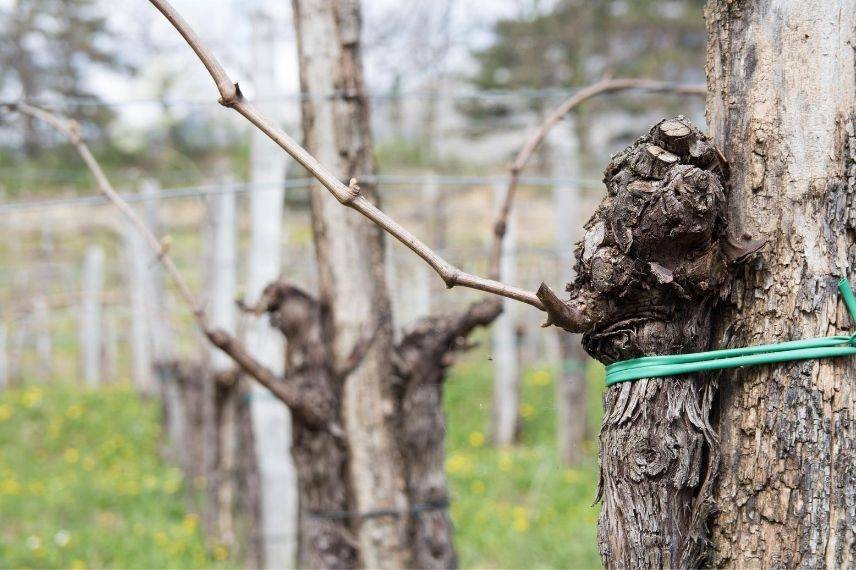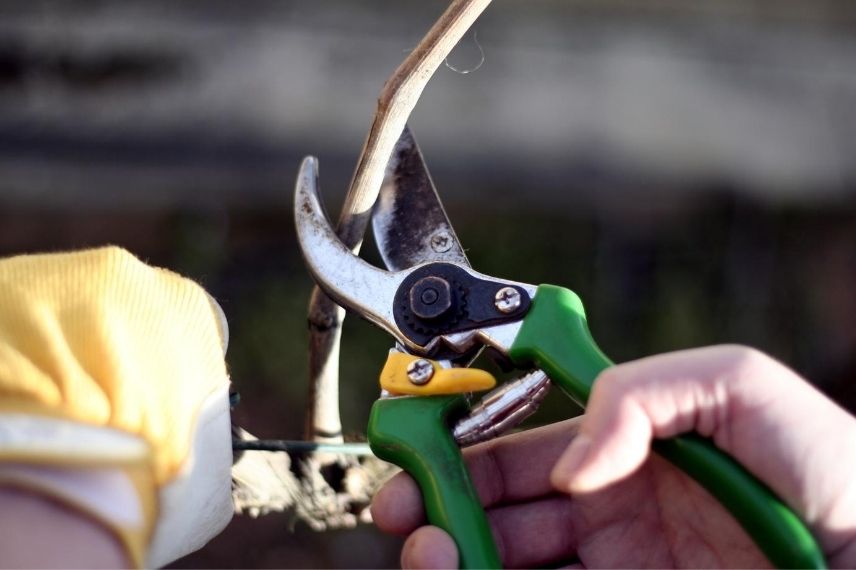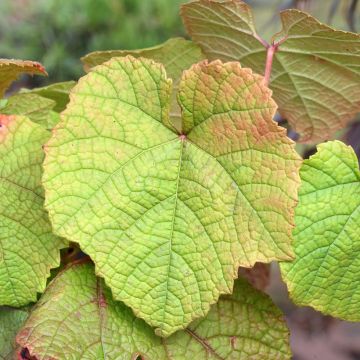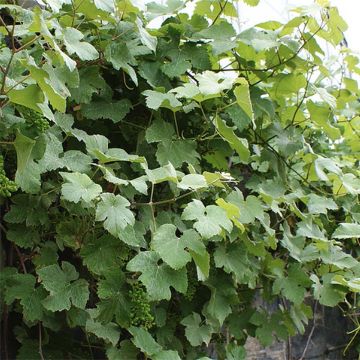
Propagation by cuttings of grapevine: how to succeed with your cuttings?
And get even more grape clusters
Contents
Grapevine (Vitis vinifera) is a climbing, sarmentous bush cultivated since ancient times for its clusters called “grape” with fleshy, juicy and sweet pulp. If you particularly like them, why not try propagating it to produce new vines and achieve more abundant grape harvests? Taking a grapevine cutting is not complicated; it is also quicker than grafting or layering used by winegrowers, which is why we recommend it. This operation is carried out in two stages: taking cuttings in autumn, planting in spring. First harvest: 3 years later!
Discover how to make a successful grapevine cutting to enjoy bountiful harvests every year.
When to carry out propagation by cuttings for grapevine?
Late autumn and early winter are best times to propagate grapevine.
Carry out propagation by cuttings after leaves have fallen, when sap is moving downwards, in November–December depending on region. Propagation by cuttings of grapevine is practised on summer-ripened shoots, i.e., when wood is lignified at the base but remains supple at the tips. You can reasonably carry out propagation from September through March, in any case before vines resume growth.

Read also
Grapevine: choose the right varietyHow to propagate grapevine step by step?
Take grapevine cuttings
Always work on a vigorous, healthy grapevine, 2 to 3 years old and disease-resistant.
- With a sharp, disinfected pruning shear, take this year’s woody climbing stems of a good diameter, straight and well lignified from a vine
- Cut about 3 to 5 cm above the bud
- From each woody climbing stem, cut cuttings about 30 cm long carrying 2 to 4 eyes
- Remove tendrils and buds present on the stems
- With a very sharp knife, trim the end of the cuttings on a bevel for 3 to 4 cm, just above an eye

Note: ensure cuts are clean and sharp
Stratify the cuttings before planting
Grapevine cuttings need to be stratified, that is, exposed to cold to soften the wood and thus encourage development of roots and buds. They will spend the whole winter outdoors.
- Optionally dip the bevels in plant hormone for propagation by cuttings
- Push 3 to 5 cuttings into pots filled with a mix composed half of compost for sowing/propagation by cuttings and half of sand
- Insert each about 10 cm deep
- The substrate should remain moist, but not waterlogged so buds can start
- Place in a sheltered spot, for example at the base of a north-facing wall
Pot on cuttings into buckets or plant out
The following spring, in March–April, depending on outside temperature:
- Pot on your cuttings in a nursery into a light soil made of equal parts compost and sand
- Using a dibber, plant them so the top bud is 5 cm above soil level
- Backfill and firm well so the substrate adheres to the grapevine cuttings
- Space each stem about 30 cm apart
- Keep slightly moist, but not excessive, until fully rooted, i.e. until the following autumn

Discover other Grapevines
View all →
Available in 1 sizes
Available in 1 sizes
Available in 1 sizes
Available in 1 sizes
Available in 1 sizes
Available in 1 sizes
Available in 1 sizes
Available in 1 sizes
Available in 1 sizes
Available in 2 sizes
Where and how to plant grapevine cuttings?
Young vines will be replanted in open ground, at their final location once they are sufficiently rooted and leafy, almost one year after propagation by cuttings. Planting takes place in autumn before first frosts and after leaf fall.
- Using a spade fork, lift the young vine plants and transplant into well-prepared, deep soil
- Trim back any overly long roots slightly
Grapevine requires well-draining, deep soil, as its roots go very deep into the ground. It prefers dry, stony, rather calcareous soil, although it adapts to any good, well-draining garden soil. Give it a sunny, very warm position sheltered from cold winds.
Are there other methods of propagation by cuttings?
To save time and avoid potting on, you can also stratify cuttings by planting them upright directly in the garden in a light soil mixed with sand. You can then select the best ones.
Vine cuttings in water
Propagation by cuttings of vine in water is a simple, accessible method to observe root emergence. It involves placing segments of woody climbing stems in a glass or jar of water, ensuring only the base is submerged. Water should be changed regularly to prevent mould. First roots often appear after 3 to 5 weeks, depending on ambient temperature. Once well developed, cuttings can be potted into a light substrate. This method is mainly suitable for trials, but yields less reliable results than propagation by cuttings in soil or sand.
Good to know: grafting is also a commonly used technique to multiply vines, allowing a rootstock resistant to soil-borne diseases to be combined with a scion of the desired fruiting variety.
Find out more
- Discover our advice sheet : Propagation by cuttings — everything you need to know about the different techniques and our tips to succeed with your cuttings
- See our sheet : Grapevine: planting, cultivation, pruning
→ And beware: do not confuse propagation by cuttings of grapevine with that of the Virginia creeper, an ornamental climbing plant that does not produce edible fruit. The latter can also be propagated by cuttings, but that’s another story: How to propagate Virginia creeper.
Frequently asked questions
-
Can all types of vine be propagated by cuttings?
Most vines can be propagated by cuttings, whether ornamental or fruit-bearing. However, some grafted hybrid varieties will not yield an identical young plant when propagated by cuttings. -
How long does it take for a vine cutting to take root?
A cutting taken properly in mid‑winter can start to develop roots as early as spring. Planting out in open ground is generally possible after 6 to 8 months.
- Subscribe!
- Contents









































Comments